Who said that the world is a jungle was perfectly right. To be more exact, we live our lives between two types of jungles: the urban world that we built in our efforts to tame the world and real wilderness that is still out there even if we don’t have to deal with it every day, like our ancestors had to.
[the_ad_placement id=”in-text-1-type-r”]Of course, each world is tough in its own ways but there is a big difference between what we go through every day (catch the bus or fight over a taxi) and the wilderness survival. It may not seem so, but Mother Nature is not as nurturing we believe it to be when you’re alone, in the middle of nowhere without food, fire or water.
Wilderness survival is a lesson that needs to be thought and learned before you leave home. You need to learn how to get by with only what you have in your survival gear until rescue teams find you or you reach civilization. You have to learn about finding a shelter over night, how to signal your position and ask for help using light and sound, how to make sure the water you drink is pure and how to find food.
All these are of extreme importance because the human body is not equipped to live in the outside for a long period of time. We need shelter and fire to keep us warm and protect us from wild animals and natural elements.
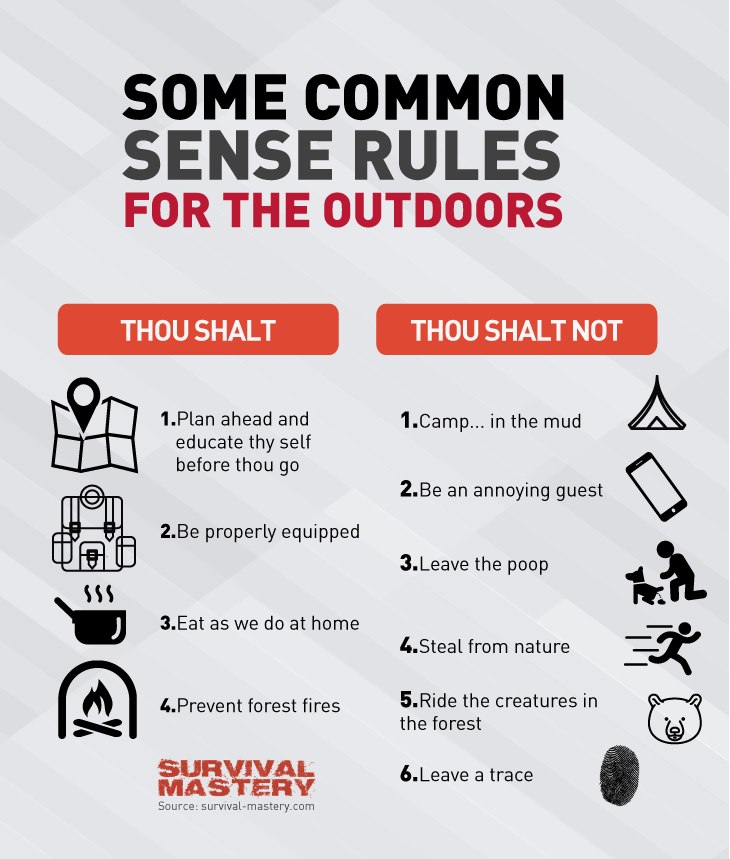
Ask yourself how you would react if (against your will) you’d get lost in a wide wooded area with wild animals (wolves, bears, dears, rabbits, squirrels)? All you have is your backpack with a few supplies and you need to find your way out. The first questions you need to ask are these:
- Do you know how to build a shelter with what you have around?
- Do you know how to light a fire without matches?
- Do you know how to look for food and how to purify water?
- Can you manage to survive without your survival gear?
Sometimes the worst happens and you get separated from your backpack and your survival gear and you have to manage living only by using your brain and your body. Is your knowledge rich enough to make it out alive and safe?
If these questions make you feel uncomfortable and only the thought of being alone in the woods makes you have a panic attack, then we suggest you reading the following. We gathered valuable information on wilderness survival, with and without an outdoor survival gear, to make sure our readers are going to come out of any situation survivals.
How to make a fire?
When you know how to make a fire under any circumstances, you already have a few important advantages by your side:
- you can warm or bake food
- you get to keep your body temperature stable
- you can stay dry
- fire keeps wild animals away
- you can signal for help using smoke
Being able to keep your body temperature within the standard limits is one of the most important things you have to worry about when you’re in the wilderness.
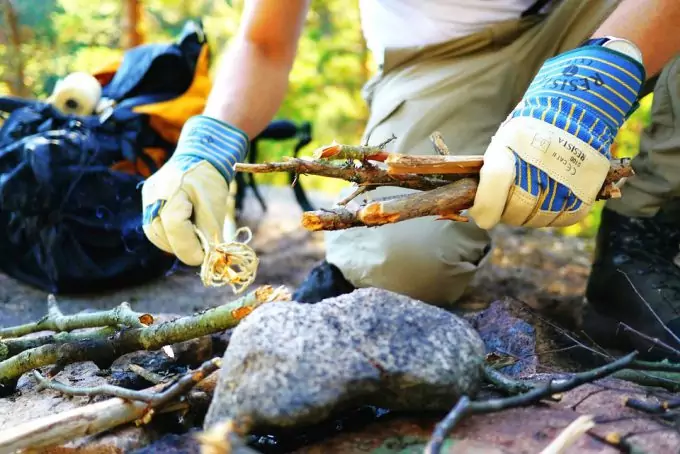
Usually you have to worry about cold and humidity over night. If it’s summer, during the day you’ll get enough heat from the sun but during the night it’s hard to resist without a fire. It’s a thousand times more important to know how to make a fire during winter when you can freeze to death (day or night).
Making a fire when you have your survival gear
If you have your survival gear, you’re already in a better place. You should have matches and fire starters in there so all you have to do in order to make a fire is gather woods. Try to find ones that are bone dry from the sun or old so you can light the fire easily. Wet woods will make a lot of smoke which you can use to signal rescue teams but a flame will be more helpful to keep you warm.
Don’t forget to put out the fire when you’re going to sleep and make sure you’re not close to trees. You want to stay warm, not to light the entire wood on fire.
We recommend you take a look on our reviews for waterproof matches and the best fire starter you can buy for your survival kit.
Making a fire when you don’t have a survival gear
In what world would you get caught in the wilderness without at least a lighter on you? If Hollywood showed us something important is that situations we consider impossible do happen. What if your plane crashes in the Amazonian forest and you’re the only survivor? You survive because you manage somehow to jump from the plane before the entire thing goes deep in the woods, far, far away. So you’re alone in a huge forest, there are things lurking around you in the shadows and you are in your vacation outfit. Now things get a bit more complicated.
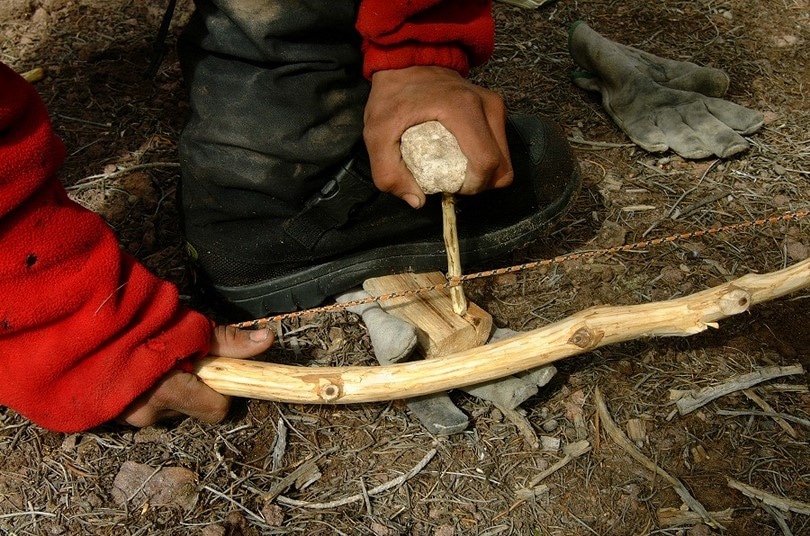
Still, there’s no need to panic if you paid attention when you learned about wilderness survival.
There are several proven methods to make a fire without any man-made fire source but the easiest one is the bow drill. For this you’ll need:
- a spindle made out of a strong, bone dry stick
- a fireboard where to fit the spindle made out of a log you split or an old board
- a socket that can be a rock or another piece of wood – you use this to hold the spindle in place at the end that is not fixed in the fire board
- a bow – to make the bow you’ll need a slightly curved stick and a string (usually paracord but if you don’t have it you can use shoelaces, a piece of clothing, anything strong enough to resist the friction)
- dry material you can find around (very dry grass, dry leaves, hay, paper, bark, etc)
- a professional knife (you can even find one that already has a socket in it)
Now that you managed to gather everything up you need to start working on your fire. You never thought that making fire is that much trouble, did you?
First, make the bow; it should be about the length of your arm. Put the string on the stick and you’re done. After the bow is done, take care of the fire board. Make a notch in it using your knife, and a dent shaped like a V, right next to it. Put your dry material right underneath the notch.
The next step is to make a loop with the bow string and put your spindle through it. Then put one end of the spindle in the fireboard and apply pressure on the other one using the socket. Now the fun begins: start sawing. Using the bow string spin the spindle to create friction between the spindle’s tip and the fireboard.
The movement must be fast enough so you can create an ember. Put the ember on the dry material and blow it until it catches on fire. There you go! You managed to create fire!
[the_ad_placement id=”in-text-2-type-r”]If you need more explanations regarding the bow drill fire method, here is a very good video tutorial on how to make fire in the wilderness.
If it happens to have glasses with you or any sort of lenses, you’re lucky! You can use the sun to make your first fire in the wilderness. Gather a pile of dry leaves and grass and try to concentrate a beam of sun light onto the pile. After a while the dry material will catch on fire. You can do the same with ice if you have any lying around. Use a piece of ice as you’d use lenses to concentrate the sun light.
How to make a shelter
Wilderness survival is not just about survival of the fittest, is also about survival of the one who has the right knowledge. So if you are a small person, with normal muscular development and an above average effort resistance you’ll still be able to make it alive out of a bad situation if you know what to do and how to do it. Let’s say that you managed to make a nice fire and now you are all warmed up and ready for more. You’ll need a shelter.
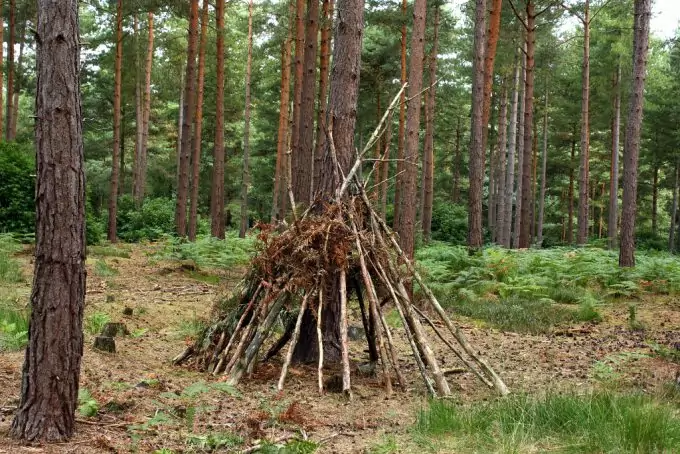
Depending on the area you are in, you may find some caves that could be a good shelter idea but first make sure that no one else is in there. During winter, bears like to use caves as their homes so make sure you’re not waking anybody up.
Making a shelter when you have your survival kit
If you’re an experienced survivalist or a good learner, you’ll know that your wilderness survival kit must have at least a tarp and some rope. Using these you can improvise a pretty good shelter by tying the rope to the trees and putting the tarp over. You can use some sturdy branches to make the shelter more comfortable. It’s easy, simple and it can become cozy if you have anything else with you like a sleeping bag and a sleeping mattress to use as isolation between your body and the ground.
Take a look at our reviews for survival tents to be better prepared for your next outdoor adventure.
Making a shelter when you don’t have your survival kit
How about when you don’t have a tarp or rope? This is another basic wilderness survival lesson that every adventurer should know. You never know when you need such knowledge. Let’s see what you need to know in order to make yourself a nice shelter in the wilderness using just what you have around.
- The first thing you need to consider is the place. You must choose a place with a lot of building material (sticks, leaves, debris, and moss). Make sure that you put your shelter on a pretty flat area so you can actually sleep inside. Another thing you need to check before starting are insects. You don’t want to wake up under an insect attack.
- Don’t make it too big. The main temptation (and mistake) is to make it big if you have enough material. Remember, you’re not building a house; you’re just trying to protect yourself from the elements. You only need space big enough to fit your body inside. If it’s too big then you’ll get cold inside because your body heat will dissipate faster.
- Make the framework out of a few strong, large branches. You need your shelter’s structure to be sturdy. Otherwise it might fall on you at the first gust of wind. Make sure that the framework is fixed in place and try to secure it with ropes and / or strings of strong grass.
- There are two types of wilderness shelters: the lean-to style and the hut style. The most common adventurers use is the first type but you can build whichever one you like.
- Cover the framework with what you find around: leaves, small sticks, grass, moss, ferns, pine needles, and so on. You can also use bark and even soil to make sure your shelter is properly insulated from rain. Don’t forget to use the same insulation inside the shelter too. You’ll need to be isolated from the ground when sleeping.
- In order to stay warm, you can either make a fire inside your shelter or simply use your body heat. If you decide to make a fire inside, be careful to not burn down all your work.
If there is no time and you need to improvise a quick shelter, before the night falls, you can look for a hole at the bottom of a big, old tree. Usually their roots form holes big enough to fit a grown man. If you manage to gather leaves and moss you’ll also be a bit comfortable and manage to keep yourself warm. Make sure that you are protected from the wind.
How to find food and water
Food and water are usually pretty easy to find in the forest. There are always plants, berries and mushrooms during summer and you can hunt small animals if you want some extra proteins. It’s always desirable to have your water purification tablets and your professional knife with you when you get lost in the wilderness but you can manage without them too.
Water is usually in abundance in the woods and it is best if you make your shelter close to a water course. Look for a natural spring if possible, the water here should be pure. If you’re not sure about water quality and you don’t have any tablets with you, try to boil it (if you can improvise some sort of fire proof container).
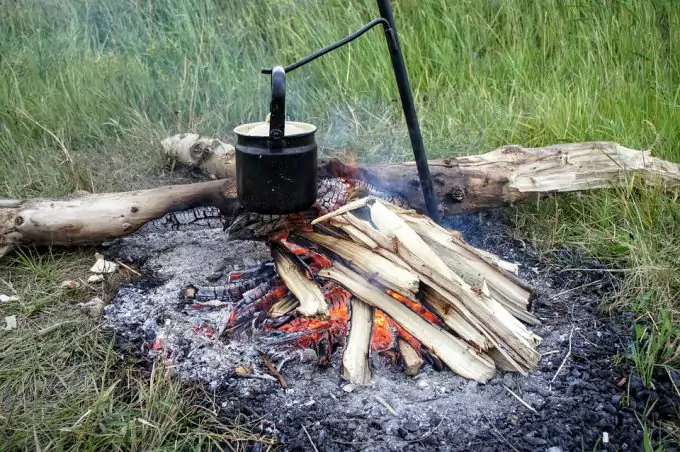
A very important aspect when feeding yourself from what you find in the woods is to make sure you know what you’re eating. Many plants, fruits and mushrooms are toxic for the human organism and even thought they won’t kill you they can make you feel very sick.
Things you can eat:
- Edible plants like nettles, asparagus, clovers, dandelion, and more. If you don’t find anything you know you can test if a plant is toxic by ingesting small amounts at first. If a small amount makes you sick don’t consider eating the rest. Since information is power, read more about wild plants you can eat.
- Edible berries like blue berry, raspberry, strawberry, and others. The wild species are smaller and their taste is more intense but you’ll definitely recognize them.
- Birds’ eggs.
- Small animals that you can catch using traps.
- Edible insects – we all know that insects are pure protein and that they are very good for our diet. We have an in-depth article on edible insects and how to prepare them.
- Fish – if you’re lucky enough to be around a stream of water with fish you can improvise a fishing gear and enjoy a barbeque fish smothered in pine branches. This is actually luxury food for someone lost in the wild so you should learn how to improvise a fishing line. We have a great piece on survival fishing with detailed techniques and tricks that may save your life.
The final conclusion is that wilderness survival is possible for both experienced outdoorsmen and normal city guys. All you need are a few items and a few basic survival knowledge and skills. The main thing that will help your survival chances when you realize that you are lost and alone in the middle of nowhere is to remain calm and assess the situation.
Try to keep yourself warm and well fed and be very careful to anything that happens around you. Also, try to send out signals using either your emergency whistle, your emergency mirror or by smoke. Someone out there is looking for you and they will find you eventually.
[the_ad_placement id=”in-text-3-type-r”]Because we know how important it is to actually see how something is done, we found a very good video tutorial on how to build a shelter in the wilderness.
Wilderness survival is a skill you achieve after practicing so try to learn as much as you can every time you go out camping. Next time when you go in an outdoor adventure with your friends, build a shelter instead of making your tent. Or try to make fire without matches or any other man-made fire source. This is the only way you will be able to learn and be sure you have the capability to survive in the wilderness.






If ever you caught yourself in need of a fire while out in the wilderness, always make sure to snuff the fire out completely. Embers can still ignite dry grass and cause wildfire, which we do not want. Right? Douse the fire completely using water or if you’re being creative, you can pee on it but make sure that it is out.
Indeed, it’s very important to make sure the fire is out completely before leaving or trying to sleep.
How will one check for any possible insect infestation when trying to find a place to take shelter for the night? How about for predators? Are suspended shelter like tree tents generally safer, especially from unanticipated attacks?
Avoid building your shelter in any low spots (this is where water and other debris pool and gather)